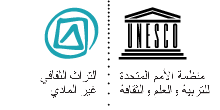الكَتّا أشولا
سجل في 2009 (4.COM) على القائمة التمثيلية للتراث الثقافي غير المادي للبشرية
بلد(ان): أوزبكستان
تعريف
Description

- الكَتّا أشولا
- © 2008 by Rustambek Abdullaev
عذراً، هذه الصفحة غير متوفرة باللغة العربية
Katta Ashula (literally ‘big song’) is a type of traditional song that forms part of the identity of various peoples of the Ferghana Valley in Uzbekistan, which is also home to Tajiks, Uyghurs and Turks, and of some regions of Kyrgyzstan, Tajikistan and Kazakhstan. An original genre, Katta Ashula combines performing arts, singing, instrumental music, Eastern poetry and sacred rites. It covers a range of subjects, from love to philosophical and theological concepts of the universe and nature, while leaving some room for improvisation. Transmitted orally from master to pupil from one generation to another during a demanding apprenticeship, it is interpreted by a minimum of two and a maximum of five singers. Nowadays, Katta Ashula is an important expression of Uzbek cultural identity that can promote dialogue between cultures. To keep this tradition viable, festivals, contests and various other activities already organized by the Government of Uzbekistan and the local authorities are to be reinforced through the introduction of programmes for transmitting the tradition to young people and research (creation of a database, organization of conferences, publications, etc.).مستندات
عرض الشرائح
فيديو
يمكن استعراض مقاطع الفيديو هذه (بالإضافة إلى العديد غيرها) من خلال موقع أرشيف اليونسكو للملتميديا”























